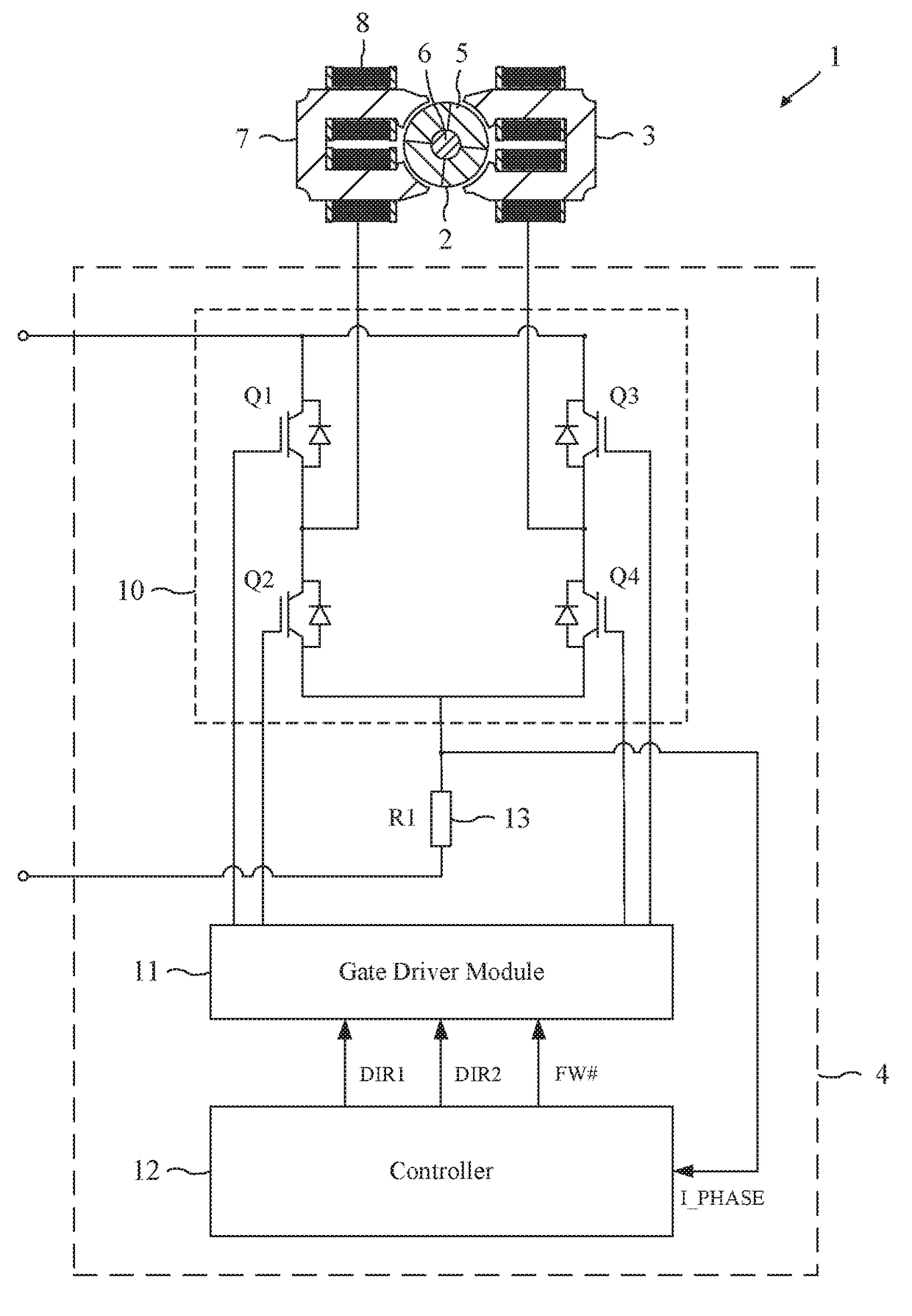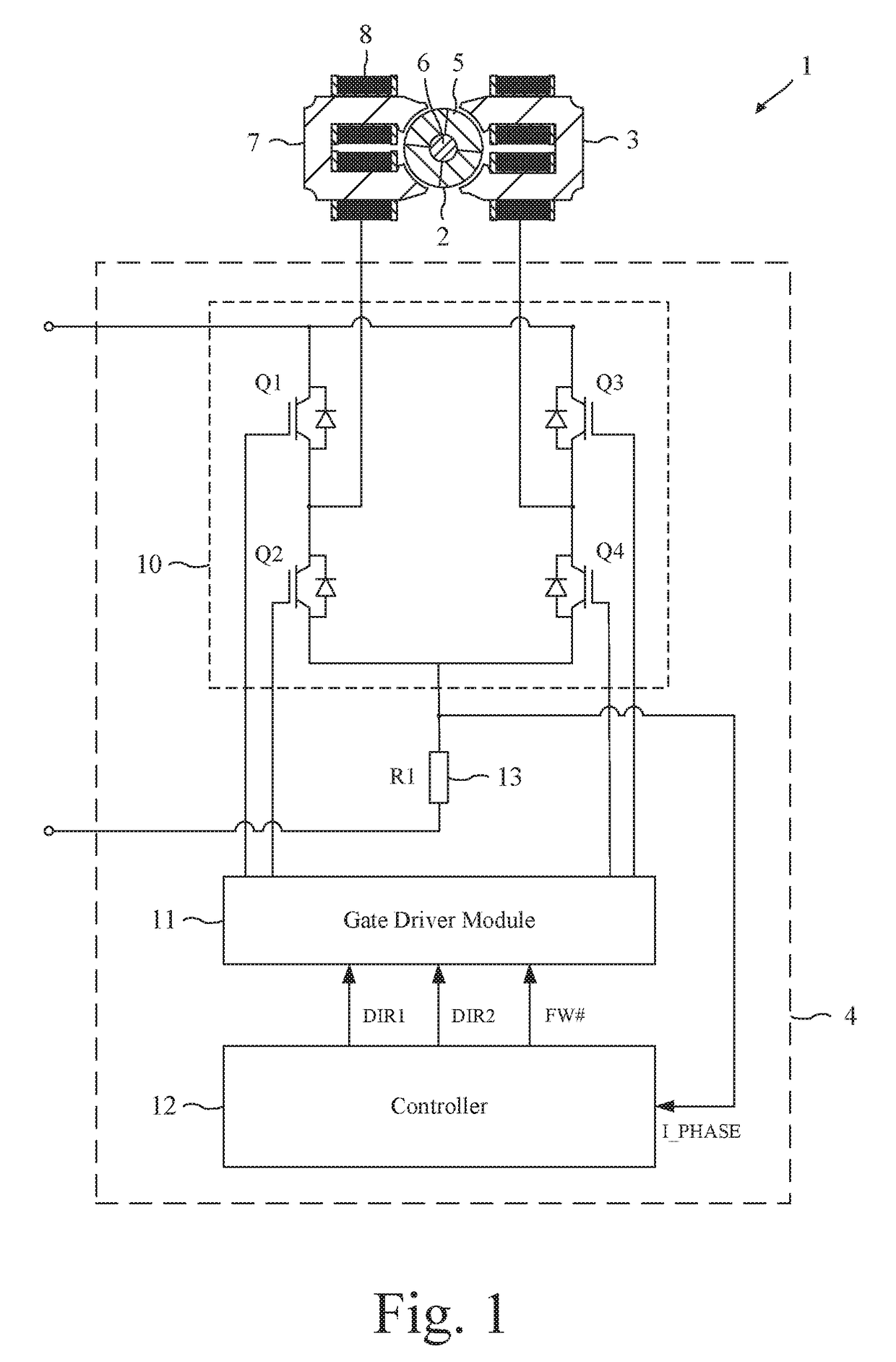Method of determining the rotor position of a permanent-magnet motor
a permanent magnet, rotor position technology, applied in the direction of electronic commutation motor control, control system, electric apparatus, etc., can solve the problems of inability to reliably determine the predetermined the inductance of the phase winding may be sensitive to the temperature change of the motor, and the position of the rotor may be poorly determined, etc., to achieve a simple and cheap controller and a higher saturation threshold
- Summary
- Abstract
- Description
- Claims
- Application Information
AI Technical Summary
Benefits of technology
Problems solved by technology
Method used
Image
Examples
Embodiment Construction
[0015]The permanent-magnet motor 1 of FIG. 1 comprises a rotor 2, a stator 3, and a control system 4.
[0016]The rotor 2 comprises a four-pole permanent magnet 5 secured to a shaft 6. The stator 3 comprises a pair of cores 7 having four salient poles, and a phase winding 8 wound about the cores 7.
[0017]The control system 4 comprises an inverter 10, a gate driver module 11, a controller 12, and a current sensor 13.
[0018]The inverter 10 comprises a full bridge of four power switches Q1-Q4 that couple the phase winding 8 to the voltage rails of a power supply (not shown).
[0019]The gate driver module 11 drives the opening and closing of the switches Q1-Q4 in response to control signals output by the controller 12.
[0020]The controller 12 is responsible for controlling the operation of the motor 1 and generates three control signals: DIR1, DIR2, and FW#. The control signals are output to the gate driver module 11, which in response drives the opening and closing of the switches Q1-Q4.
[0021]...
PUM
 Login to View More
Login to View More Abstract
Description
Claims
Application Information
 Login to View More
Login to View More - R&D
- Intellectual Property
- Life Sciences
- Materials
- Tech Scout
- Unparalleled Data Quality
- Higher Quality Content
- 60% Fewer Hallucinations
Browse by: Latest US Patents, China's latest patents, Technical Efficacy Thesaurus, Application Domain, Technology Topic, Popular Technical Reports.
© 2025 PatSnap. All rights reserved.Legal|Privacy policy|Modern Slavery Act Transparency Statement|Sitemap|About US| Contact US: help@patsnap.com



